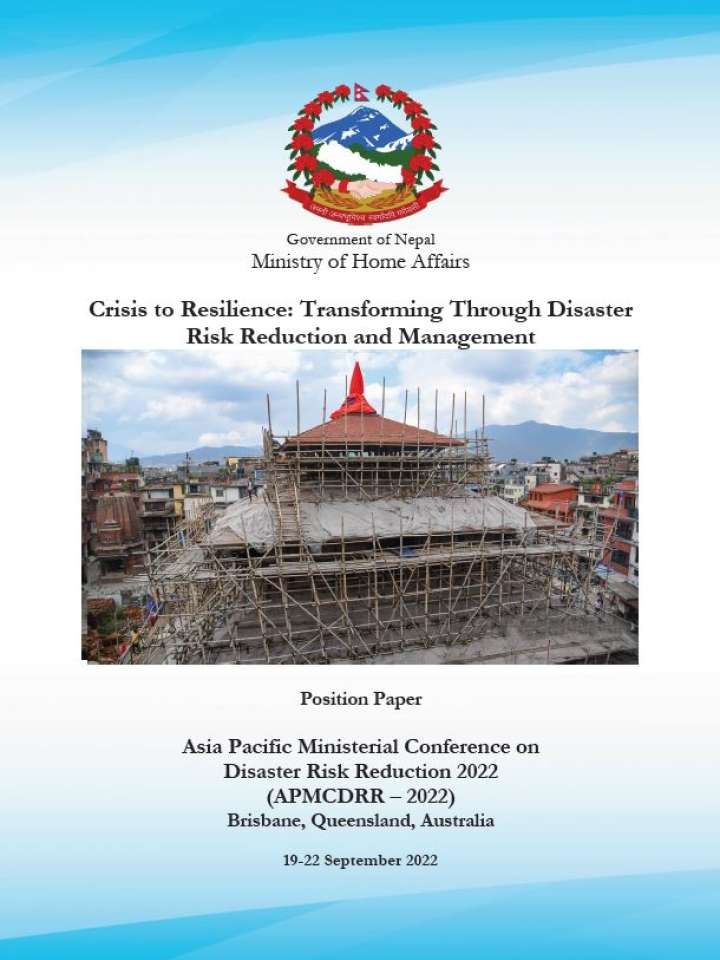Nepal: National Position Paper for the APMCDRR 2022: Crisis to resilience: transforming through disaster risk reduction and management
This position paper has been prepared for the Asia Pacific Ministerial Conference on Disaster Risk Reduction (APMCDRR) being held in Brisbane, Queensland, Australia from 19 to 22 September 2022. This paper provides a brief overview of disaster impacts on lives, natural resources, infrastructures and economy of Nepal and updated status on Disaster Risk Reduction and Management (DRRM) around the themes of the APMCDRR, including the implementation status of the Sendai Framework for Disaster Risk Reduction in the country.
Nepal is highly prone to a range of multiple hazards, including frequent earthquakes, floods, landslides, debris flows, droughts, thunderbolts, heat waves, cold waves, avalanche, hailstone, snowstorms, and windstorms. The active seismic faults generate high magnitude earthquakes like the Gorkha earthquake in 2015. Over 80 per cent of the total hazards by number are of hydro-meteorological origin. The intensity and frequency of these disasters are increasing with rapid change in weather conditions.
Explore further
